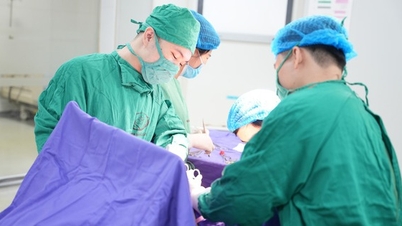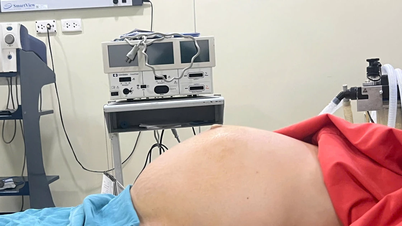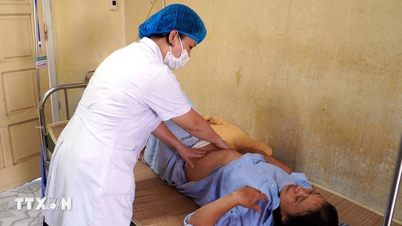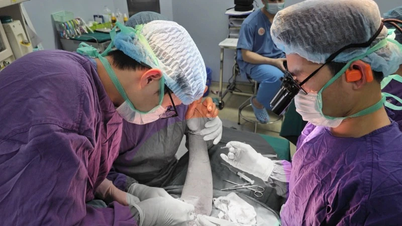The concept of “large uterine fibroids” currently has no absolute standard. According to obstetricians and gynecologists, assessing whether a tumor is large or not is not simply based on a few centimeters of difference in size.
The core issue is how the tumor causes clinical symptoms that affect the woman's health and quality of life.
For tumors with a diameter of 5-7cm or more, most experts believe that this is a worrying size and needs to be closely monitored or surgically intervened if indicated.
However, in reality, many women are still subjective to warning signs or delay treatment because of fear of pain.
Thinking she had belly fat, the woman carried a tumor that looked like a 6-month pregnancy for many years ( Video : Hai Yen).
Master, Doctor Nguyen Van Xuyen, Hong Ngoc General Hospital - Phuc Truong Minh, recalls a special case: "I once received a 42-year-old female patient who had lived with a uterine tumor for many years without treatment. Her belly was abnormally large, but because she was afraid of surgery, she kept postponing it. Only when her health declined significantly did she decide to go to the hospital."
Doctor Xuyen said that the ultrasound and MRI results showed that the tumor had grown to the size of a 6-month pregnant uterus. He shared that during the examination, the patient was both worried and regretful for having waited so long to seek treatment.
“After the surgery, she recovered much faster than expected. When she returned to work, her slim stomach surprised her colleagues, who thought she had just had liposuction to lose weight,” Dr. Xuyen said with a smile.
This story is not uncommon. According to experts, delaying treatment of large uterine fibroids not only causes the tumor to continue to grow, causing uterine deformation, but can also lead to complications such as torsion, necrosis, and compression of neighboring organs such as the rectum, bladder, ureter, etc. Prolonged blood loss due to menstrual disorders also makes the patient susceptible to chronic anemia and physical weakness.
Besides physical factors, the psychological burden caused by changes in appearance also causes many women to fall into a state of self-consciousness, seriously affecting their quality of life and social relationships.
From a professional perspective, treatment of uterine fibroids does not always require surgical intervention. For small, asymptomatic tumors, your doctor may recommend periodic monitoring.
However, once the tumor grows rapidly, causing abdominal pain, menorrhagia, urinary disorders, or signs of suspected degeneration, surgery is necessary to preserve uterine function and avoid unwanted complications.
It is important that women do not wait until their body speaks with obvious symptoms before seeing a doctor. Regular gynecological examinations, at least 1-2 times a year, combined with lower abdominal ultrasound or transvaginal ultrasound are the best ways to detect early and proactively control underlying diseases such as uterine fibroids.
Large uterine fibroids are a problem that cannot be taken lightly. The initiative, alertness and understanding of each woman will be the key to protecting reproductive health.
Source: https://dantri.com.vn/suc-khoe/tuong-beo-bung-nguoi-phu-nu-mang-khoi-u-nhu-thai-6-thang-suot-nhieu-nam-20251112172404423.htm






![[Photo] General Secretary To Lam and National Assembly Chairman Tran Thanh Man attend the 80th Anniversary of the Traditional Day of the Vietnamese Inspection Sector](https://vphoto.vietnam.vn/thumb/1200x675/vietnam/resource/IMAGE/2025/11/17/1763356362984_a2-bnd-7940-3561-jpg.webp)


































































































Comment (0)